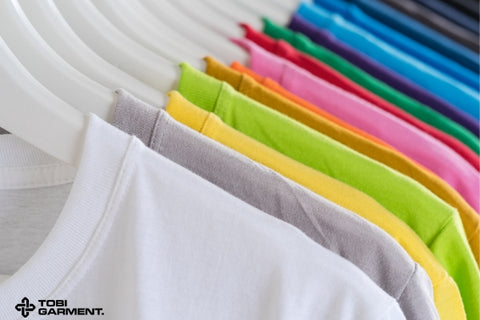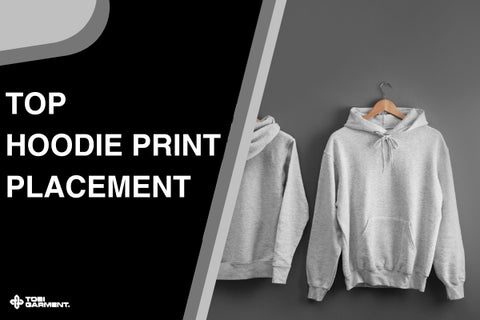
In this comprehensive guide, we'll dive deep into the world of t-shirts and explore the best options for screen printing. From classic cotton to trendy tri-blends, we'll help you select the perfect fabric that not only looks amazing but also ensures a durable and vibrant print.
Best T-Shirt Materials for Screen Printing
When it comes to screen printing, the fabric you choose plays a crucial role in the overall quality and longevity of your design. Here are some of the most popular t-shirt materials to consider:
Cotton: The Classic Choice
Cotton is a timeless fabric that's beloved for its softness, breathability, and versatility. It's a popular choice for screen printing due to its excellent ink absorption properties, ensuring vibrant and long-lasting prints.
Types of cotton:
- Ringspun cotton: Known for its superior softness and smoothness, ringspun cotton is a premium choice for t-shirts. It's made using a special spinning process that results in a finer, more even yarn.
- Open-end cotton: A more affordable option compared to ringspun cotton, open-end cotton is still a great choice for screen printing. It offers good durability and ink absorption, making it a popular choice for budget-conscious projects.
Polyester: A Durable Option
Polyester is a synthetic fabric that's renowned for its durability and wrinkle resistance. It's a great choice for t-shirts that will be subjected to frequent washing and wear. While polyester may not have the same softness as cotton, it offers excellent ink adhesion and a vibrant print.
Rayon: The Luxurious Feel
Rayon is a semi-synthetic fabric that's known for its luxurious feel and drape. It's a popular choice for t-shirts that are designed to be stylish and comfortable. Rayon's smooth surface provides a great base for screen printing, ensuring a crisp and clean design.
Tri-blend: The Balanced Blend
A tri-blend fabric combines cotton, polyester, and rayon, offering the best of both worlds. It's a popular choice for t-shirts that are both comfortable and durable. Tri-blends provide excellent ink adhesion and a soft, breathable feel.
Organic Cotton: The Eco-Friendly Option
For those who prioritize sustainability, organic cotton is a great choice. It's grown without the use of harmful pesticides or synthetic fertilizers, making it a more environmentally friendly option. Organic cotton t-shirts offer excellent ink absorption and a soft, comfortable feel.
Read more: How to Screen Print Numbers on Jerseys Like a Pro
Understanding T-Shirt Fabrics
Beyond the material itself, there are other factors to consider when choosing a t-shirt for screen printing:
Fabric Weight and Thickness
The weight and thickness of the fabric can affect the overall look and feel of your t-shirt. Heavier fabrics are more durable and can provide a more substantial feel, while lighter fabrics are more breathable and comfortable.
Fabric Texture and Feel
The texture and feel of the fabric can also impact the overall appeal of your t-shirt. Some fabrics are soft and smooth, while others are more textured and rugged. Consider the desired feel of your t-shirt when making your selection.
Fabric Care and Maintenance
Different fabrics require different care instructions. Be sure to choose a t-shirt fabric that is easy to care for and maintain. Some fabrics may require special washing or drying instructions to preserve their quality and the print.
Read more: Elevate Your Style with Custom Screen Print Shirts
Choosing the Right T-Shirt for Your Design
Once you've selected the ideal fabric, it's time to consider other factors that will influence the success of your screen printing project:
T-Shirt Color and Design Compatibility
The color of your t-shirt can affect the visibility and impact of your design. Lighter-colored fabrics are generally better suited for darker ink colors, while darker fabrics can handle lighter ink colors. Experiment with different color combinations to find the perfect match for your design.
T-Shirt Fit and Sizing
The fit of your t-shirt is essential for ensuring a comfortable and flattering look. Consider the intended audience and their preferences when choosing a fit. A relaxed fit is generally more versatile, while a more fitted style can create a more tailored look.
T-Shirt Collar and Sleeve Styles
The collar and sleeve styles can add personality and style to your t-shirt. Consider the overall aesthetic of your design and choose a collar and sleeve style that complements it.
Read more: The Ultimate Guide to Screen Printing T-Shirts
Special Considerations for Screen Printing
There are some additional factors to keep in mind when screen printing on t-shirts:
Printing on Dark Fabrics
Printing on dark fabrics requires special techniques and inks to ensure the design is visible. Discharge inks are often used for dark fabrics, as they remove the color of the fabric to reveal the design.
Printing on Specialty Materials
If you want to create a truly unique t-shirt, consider printing on specialty materials such as vintage or distressed fabrics. These materials can add a one-of-a-kind touch to your design.
Printing on Vintage or Distressed T-Shirts
Printing on vintage or distressed t-shirts can give your design a retro or worn-in look. However, it's important to choose a fabric that can withstand the printing process without compromising its integrity.
Read more: Top Hoodie Print Placements: Make Your Hoodie Stand Out
Additional Factors to Consider
Beyond the t-shirt itself, there are other factors to consider when planning your screen printing project:
Budget and Pricing
The cost of screen printing can vary depending on several factors, including the size of the design, the number of colors, and the quantity of t-shirts being printed. Set a budget and research pricing options to find a screen printer that fits your needs.
Sustainability and Ethical Sourcing
If sustainability is important to you, consider choosing t-shirts made from organic or recycled materials. Look for screen printers who prioritize ethical sourcing and environmentally friendly practices.
Brand Reputation and Quality
The quality of your t-shirt can significantly impact the overall look and feel of your design. Research different brands and read reviews to find a reputable supplier that offers high-quality products.
Conclusion
Choosing the right t-shirt for your screen printing project is essential for creating a design that looks great and lasts. By carefully considering the fabric, fit, and design elements, you can select a t-shirt that perfectly complements your vision.
FAQ
What is the best material for screen printing t-shirts?
Cotton is a popular choice for its softness, breathability, and excellent ink absorption. However, other materials like polyester, rayon, tri-blends, and organic cotton can also be great options depending on your preferences.
How do I choose the right t-shirt size for screen printing?
Consider the intended audience and their preferences when choosing a fit. A relaxed fit is generally more versatile, while a more fitted style can create a tailored look. Refer to the size chart provided by the t-shirt supplier for accurate measurements.
Can I screen print on vintage or distressed t-shirts?
Yes, you can screen print on vintage or distressed t-shirts. However, it's important to choose a fabric that can withstand the printing process without compromising its integrity.
What is the difference between ringspun and open-end cotton?
Ringspun cotton is a premium choice known for its superior softness and smoothness. It's made using a special spinning process that results in a finer, more even yarn. Open-end cotton is a more affordable option that still offers good durability and ink absorption.
Read more related posts from Tobi Garment:



